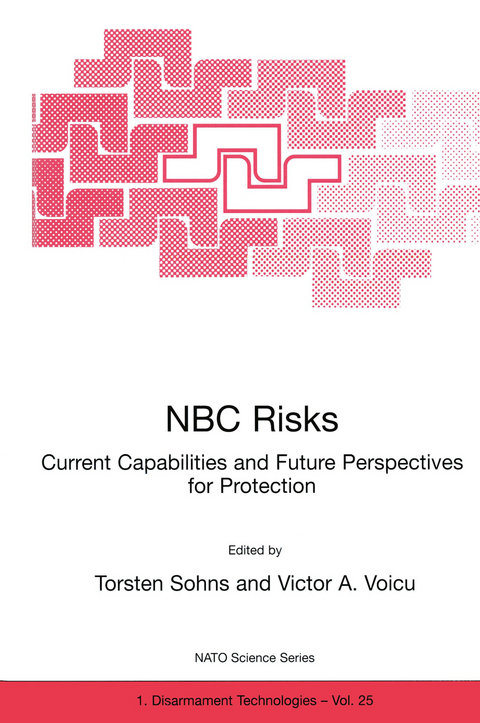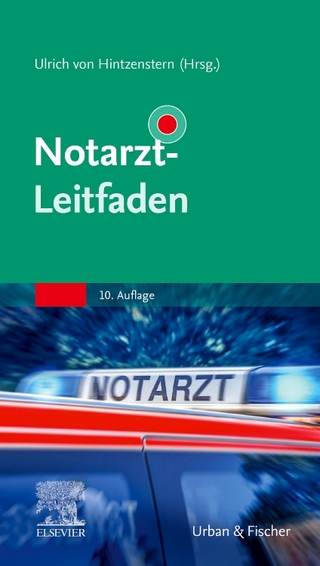
NBC Risks Current Capabilities and Future Perspectives for Protection
Springer (Verlag)
978-0-7923-5803-9 (ISBN)
The Advanced Research Workshop in Bucharest from 20. to 22. 04. 1998 covered a broad spectrum of medical and pharmaceutical approaches dealing to maintenaning and restoring of the health of civilians and military personnel exposed to ionizing radiation or biological or chemical agents. The current capabilities and future perspectives for protection against NBC hazards were analyzed from an interdisciplinary perspective. In this context the planning of medical support operations was addressed as were aspects of practical medicine and forwardlooking scientific approaches. The main areas covered were: -general approach and NBC risks -pharmacoprotection and treatment -skin protection and decontamination -pharmaceutical aspects of protectants -environmental aspects of NBC disarmament Acknowledgments The editors would like to express their thanks to NATO for having made this publication possible and all the participants of the conference who contributed their publications. In particular, the editors would like to thank Constantin Mircioiu and his staff for their assistance and support during all stages of the conference and editing. In addition, they are grateful to Harald Kempf and his staff for their editorial assistance in preparing this volume. THE PROLIFERATION OF WEAPONS OF MASS DESTRUCTION: HEALTH RISKS -An Analysisfrom a Medical Perspective- T. SOHNS German Armed Forces Medical Academy Neuherbergstr. II, D -80937 Munich Summary: The proliferation of weapons of mass destruction I and long-range means of delivery continues to be a matter of serious concern as it can pose a direct threat to national and international security.
I Nuclear, Biological and Chemical Risks — General Approach.- 1. The Proliferation of Weapons of Mass Destruction: Health Risks — An Analysis from a Medical Perspective.- 2. Intervention in a Chemical, Biological or Nuclear Disaster. A Romanian Point of View.- 3. Are the Civilians prepared for Chemical and/or Biological Warfare? The Need of a Cooperative Effort for a simple Guideline.- 4. Defense against Biological Terrorism — Scope and Limits.- 5. NBC Medical Planning System (NBCMedPlanS) — An Expert System.- 6. Planning of Medical Support for a Threatened or Actual Biological Environment. Principles, Policies and Procedures.- II Pharmacoprotection and Treatment.- 7. Finite Interactions Theory — A Biophysical Approach to Xenobiotic — Membrane Interface Interactions.- 8. A Theoretical Study of the Interactions of Acetylcholinesterase, Irreversible Inhibitors, and their Antidotes.- 9. Electrochemical Properties of Platelets: Clinical and Pharmacological Applications.- 10. Features of Apoptotic Cell Death in SCL II Cells after Exposure to 2,2-Dichlorodiethylsulfide.- 11. A NewView on the Mechanism of Action of Reversible Cholinesterase Inhibitors as Drugs for Prophylaxis.- 12. Cholinesterases as Bioscavengers for Protection against Organophosphate Chemical Warfare Agents.- 13. Selectivity and Protective Activity of Muscarinic Receptor’s Antagonists in Organophosphates Poisoning.- 14. Reactivators, from Classic to a New Generation.- 15. Convulsions in Organophosphate Intoxications: Their Mechanism and Treatment.- 16. Treatment of Organophosphate Nerve Agents, Current Therapy and Future Prospectives.- 17. Reactivation of Organophosphorus — Inhibited Human Erythrocyte-Acetylcholinesterase by Oximes in vitro.- 18. Cholinesterase Status in OrganophosphatePoisoned Patients.- 19. Testing the Antidotal Efficiency in the Treatment of Aflatoxin Poisoning.- 20. Zeolites as (Potential) Decorporating Agents.- III Skin Protection and Decontamination.- 21. New Concepts of Prophylaxis and Decontamination of Chemical Warfare Agents.- 22. Sorption-Mechanical Principle in Skin Decontamination.- 23. Reduction of the Skin Permeation of Xenobiotics Using Chemical Penetration Retarders.- 24. Effects of Protective Clothing on the Skin Penetration of Xenobiotics.- 25. Powders, Ointments and Solutions as First Aid, Nonspecific Antidotes for Organophosphorous Compounds at Skin Level.- 26. Protective Properties of Standard Combat Clothing against Skin Penetration of Supertoxic Lethal Chemical Warfare Agents.- IV Pharmaceutical Aspects of Protectants.- 27. Studies Concerning some Effects of Drugs, Colloid Vectors for Drugs and Decorporators on Blood Global Physico-Chemical Parameters.- 28. Transdermal Systems with Poly-2-Hydroxyethylmeth-Acrylates and new Biological Models for their Study.- 29. New Pharmaceutical Forms for Skin Protection.- 30. New Systems of Polyacrylate Copolymers for Controlled Delivery of Drugs.- 31. Researches on the Embedding of Decorporators in Microemulsions.- 32. Controlled Release Microspheres Prepared by using an Emulsion Solvent-Diffusion Technique as a Tool in Design of new Antidotes.- 33. Micro and Nanoparticles as Drug Carriers.- 34. A Structure — Property Relationship and Quantitative Approach to the Development of Universal Transdermal Drug Delivery System.- 35. The Dependence between Physico-Chemical and Allergenic Properties of Xenobiotics.- 36. Some Physical Chemical Aspects of Albumin-Alkali Halide Interaction.- V Environment Aspects of NBC Disarmament.- 37. Considerations in Investigations of MilitaryInstallation Decommissioning: Determining how Clean is Clean.- 38. The Comparative Danger of Chemical Weapons and Organophosphorous Pesticides for Aquatic Ecosystem Health.- 39. Direct Methods in the Evaluation of the Internal Contamination with Radionuclides.- 40. Retrospective Detection of Exposure to Organophosphates: Analyses in Blood of Human Beings and Rhesus Monkeys.- 41. Radiochemical Analysis of Environmental Samples in the Era of Disarmament.- List of Participants.
| Reihe/Serie | NATO Science Partnership Sub-Series: 1 ; 25 |
|---|---|
| Zusatzinfo | 64 Illustrations, black and white; XIII, 543 p. 64 illus. |
| Verlagsort | Dordrecht |
| Sprache | englisch |
| Maße | 160 x 240 mm |
| Themenwelt | Medizin / Pharmazie ► Medizinische Fachgebiete ► Notfallmedizin |
| Naturwissenschaften ► Biologie ► Ökologie / Naturschutz | |
| ISBN-10 | 0-7923-5803-1 / 0792358031 |
| ISBN-13 | 978-0-7923-5803-9 / 9780792358039 |
| Zustand | Neuware |
| Haben Sie eine Frage zum Produkt? |
aus dem Bereich


